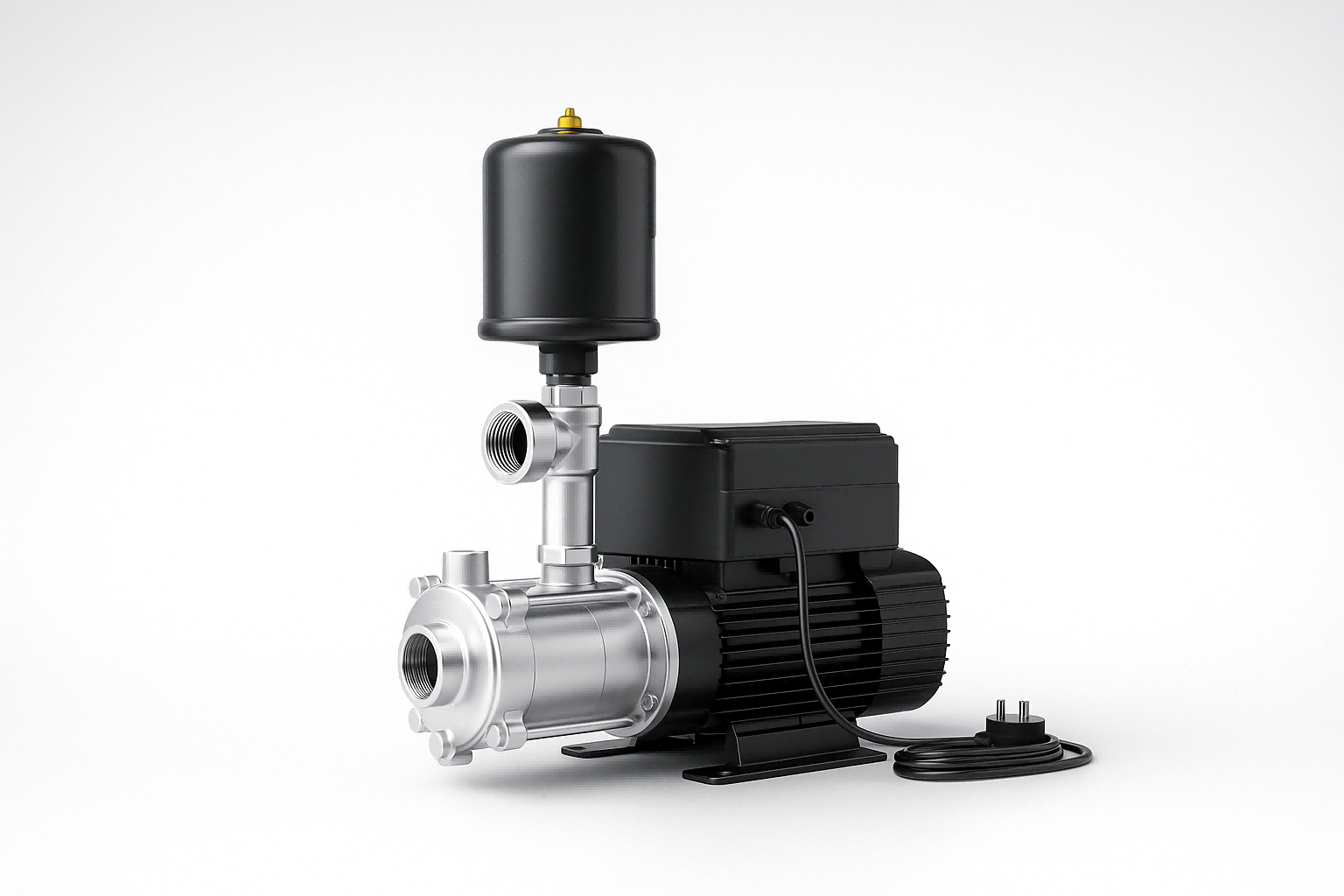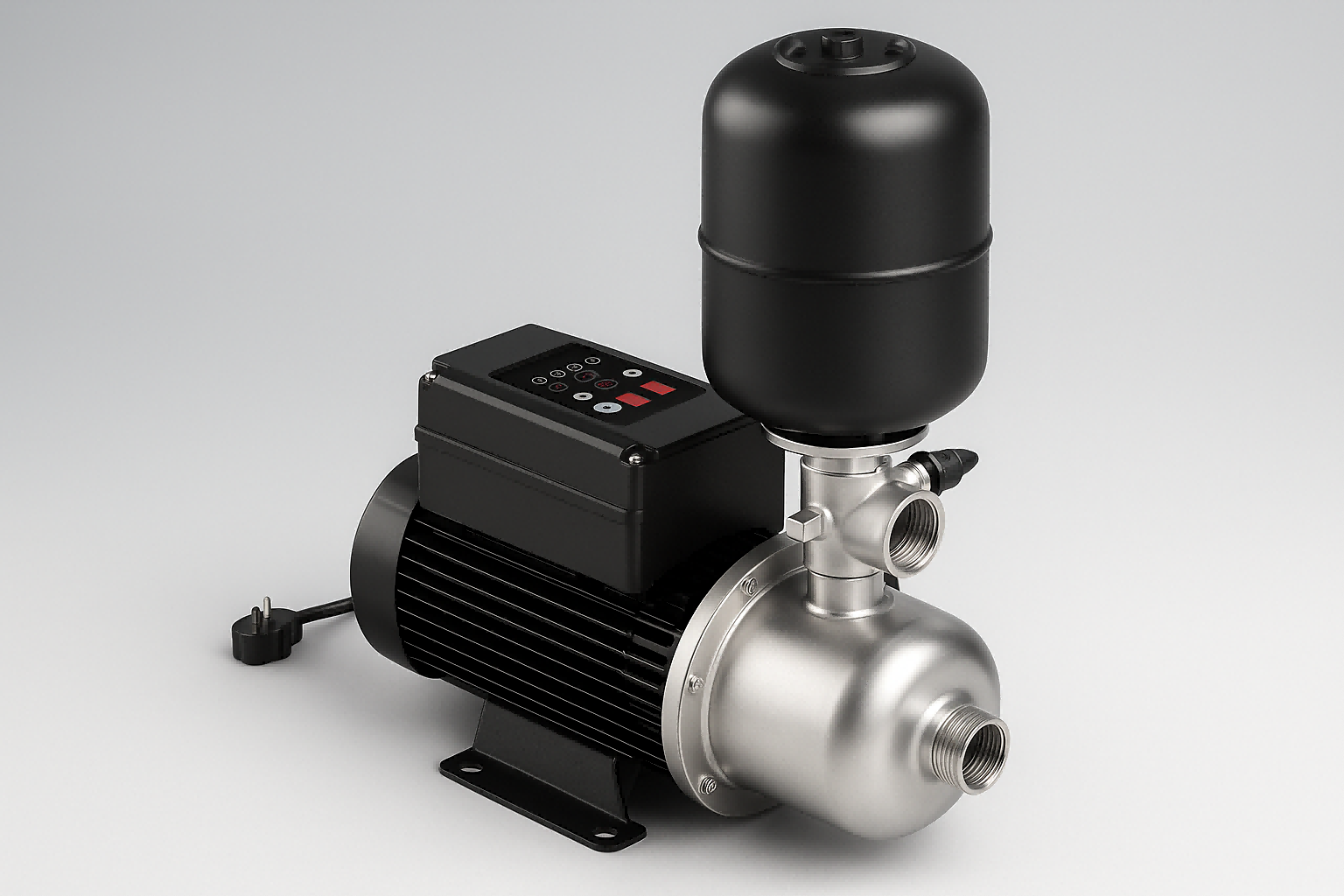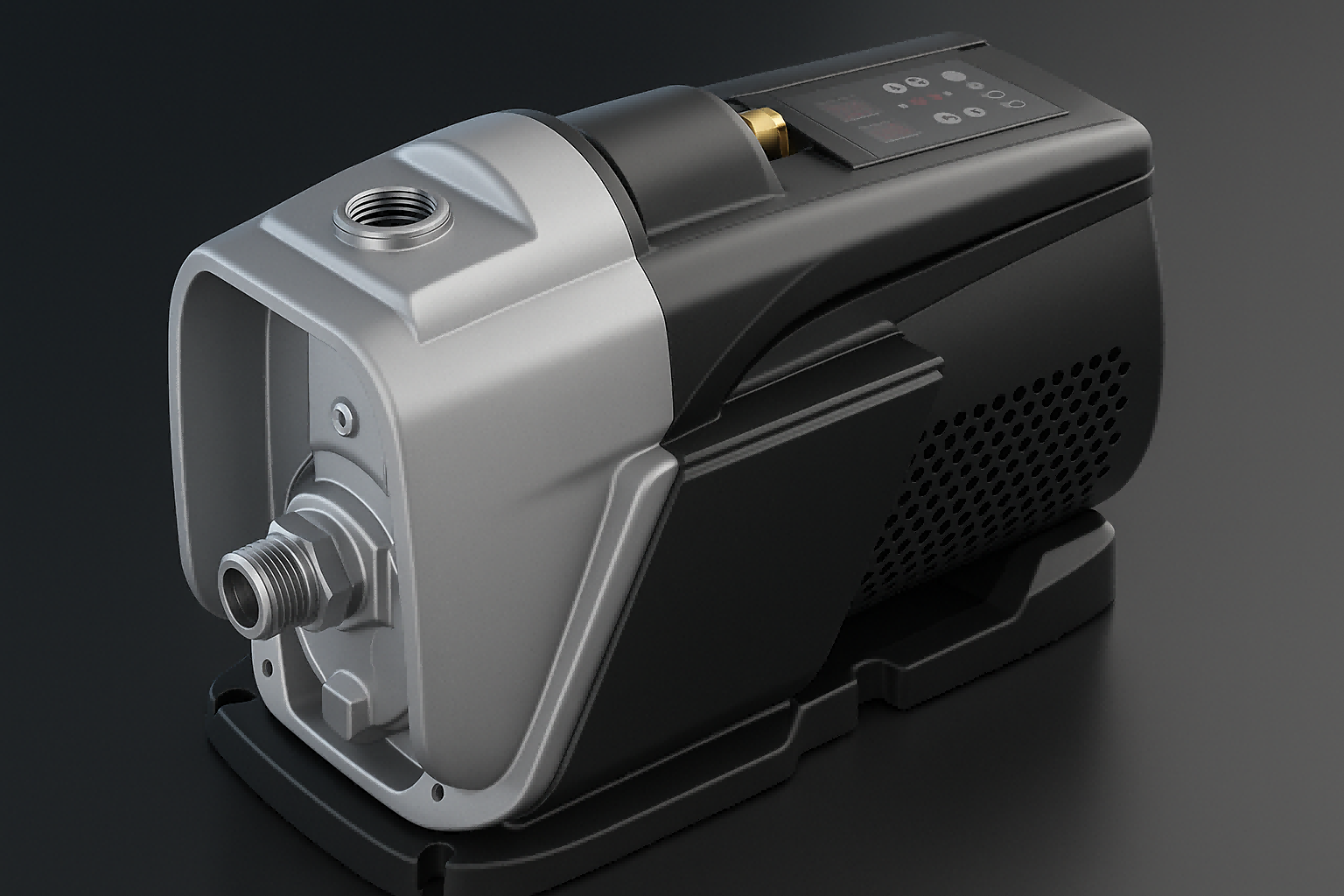Struggling to explain pump running costs to your clients? High electricity bills can be a major concern for end-users. The right pump technology provides a clear and efficient solution.
A water pump's electricity needs depend on its power rating (watts), run time (hours), and efficiency. For example, a 1,000-watt (1kW) pump running for one hour uses 1 kilowatt-hour (kWh) of electricity. The key to lower consumption is matching the pump's performance to the actual demand.

Understanding this calculation is just the beginning.
As a distributor, your success depends on offering products that solve your customers' biggest problems, and energy cost is a huge one.
To truly grasp pump electricity usage, we need to explore the specific factors that influence it.
This knowledge empowers you to guide your clients toward the most cost-effective and efficient solutions, building trust and boosting your sales.
Let's dive into the details.
What Factors Determine Pump Power Consumption?
Concerned that inefficient pumps are inflating your customers' operating costs? This can lead to dissatisfaction and hurt your brand's reputation. Offering energy-efficient solutions directly addresses this critical pain point for your clients.
The main factors determining a pump's power use are its horsepower, flow rate (GPM), head pressure (feet or PSI), and overall system efficiency. A larger, more powerful pump moving more water against higher resistance will naturally consume more electricity.
These elements are interconnected, and understanding them is key to advising your customers properly.
The goal isn't just to sell a pump.
It's to provide a complete, efficient water management solution.
As a partner to your clients, you need to break down these technical aspects into clear, business-focused benefits.
Let's explore each factor in more detail.
Understanding Key Performance Metrics
At its core, a pump's job is to do work.
That work translates directly into electricity consumption.
Three primary metrics define this work.
- Flow Rate (GPM/LPM): This is the volume of water the pump can move in a given amount of time. Higher flow rates require more energy.
- Head Pressure: This represents the resistance the pump must overcome. It includes the vertical height the water is lifted plus friction loss in the pipes. Greater head means more work and more power.
- Pump Efficiency: This is the ratio of the useful work performed by the pump to the power it consumes. No pump is 100% efficient due to losses from friction and heat.
The Impact of Motor Efficiency
The electric motor is the heart of the pump.
Its efficiency rating is a critical factor in overall power consumption.
A motor with a higher efficiency rating converts more electrical energy into mechanical energy, wasting less as heat.
For your clients, choosing a pump with a high-efficiency motor, like those using permanent magnet technology, means direct savings on every electricity bill.
It's a powerful selling point.
System Conditions Matter
The pump itself is only part of the equation.
The entire system it operates within plays a massive role.
| System Factor | Impact on Energy Consumption |
|---|---|
| Pipe Diameter | Narrower pipes increase friction loss, forcing the pump to work harder. |
| Pipe Length & Bends | Longer pipes and numerous elbows add to the total head pressure. |
| Water Source | Lifting water from a deep well requires more energy than pulling from a surface tank. |
| Leaks | Any leaks in the system mean the pump runs longer to achieve the same result, wasting energy. |
When you advise a client, you're not just selling a product.
You're helping them design an efficient system.
This level of expertise sets you apart from competitors who just move boxes.
It positions you as a valuable consultant.
How to Calculate a Water Pump's Electricity Usage?
Finding it hard to provide clients with a clear estimate of long-term running costs? This uncertainty can make them hesitate to purchase. A simple calculation can provide the clarity they need to make a confident decision.
To calculate a pump's daily energy use, multiply its power in kilowatts (kW) by the number of hours it runs per day. For example, a 1.5 kW pump running for 4 hours uses 6 kWh. Then, multiply this by the local electricity price per kWh for the daily cost.
This simple formula is a powerful tool for you and your customers.
It transforms an abstract technical specification into a tangible, real-world cost.
This allows your clients to see the long-term value of investing in a more efficient unit.
It changes the conversation from price to total cost of ownership.
Let's walk through the steps to make this calculation easy to understand and apply.
Step 1: Find the Pump's Power Rating
First, you need to know the pump's power consumption.
This is usually listed in watts (W) or kilowatts (kW) on the pump's nameplate or in its technical specifications.
- If the power is in horsepower (HP), you need to convert it.
- 1 HP is approximately equal to 746 watts or 0.746 kW.
So, a 2 HP pump has a power rating of approximately 1,492 watts or 1.492 kW.
This is the maximum power the pump will draw under full load.
Step 2: Estimate the Daily Run Time
Next, you need to estimate how many hours the pump will run per day.
This can vary widely depending on the application.
- A residential booster pump might run for 2-4 hours intermittently.
- An irrigation pump could run for 8-12 hours continuously.
- A circulation pump in an industrial setting might run 24/7.
Working with your client to get a realistic estimate is crucial for an accurate cost projection.
Step 3: Calculate Daily Energy Consumption (kWh)
Now you can calculate the kilowatt-hours (kWh) used per day.
The formula is straightforward.
Daily Energy (kWh) = Power (kW) × Run Time (hours)
Let's use an example.
Scenario: A client is considering a 1.1 kW constant pressure booster pump for a large home. They estimate it will run for about 3 hours per day.
- Calculation: 1.1 kW × 3 hours = 3.3 kWh per day.
This number gives you a solid basis for discussing operating costs.
Step 4: Determine the Total Cost
The final step is to turn kWh into a monetary value.
You'll need the local electricity rate, which is priced per kWh.
Daily Cost = Daily Energy (kWh) × Cost per kWh
Continuing our example: Let's say the local electricity rate is $0.20 per kWh.
- Calculation: 3.3 kWh × $0.20/kWh = $0.66 per day.
To get a monthly or annual cost, simply multiply this daily figure.
- Monthly Cost: $0.66 × 30 days = $19.80
- Annual Cost: $19.80 × 12 months = $237.60
This concrete data helps clients see the financial impact of their choice and appreciate the value of an energy-efficient model.
The Role of Variable Speed Drives (VSDs) in Saving Energy
Are your customers complaining about high energy bills from their pumps? These rising costs make traditional pump offerings less attractive. A smarter pump technology solves this problem by drastically cutting electricity use.
A Variable Speed Drive (VSD) pump intelligently adjusts its motor speed to match real-time water demand. This precision control can reduce a pump's electricity consumption by up to 50% compared to fixed-speed pumps, offering significant long-term savings.
This isn't just a minor improvement.
It's a revolutionary change in how pumps operate.
For your business, offering VSD booster pumps from RAFSUN means providing a technologically superior product that directly addresses your clients' biggest operational expense: energy.
It's a key differentiator that builds your reputation for quality and innovation.
Let's explore exactly how this technology delivers such impressive savings.
The Problem with Fixed-Speed Pumps
Traditional pumps operate on a simple principle: on or off.
When they are on, the motor runs at 100% speed, regardless of the actual water demand.
Imagine using a light switch that was only 100% bright or completely off, with no dimmer.
This is how most old pumps work.
- If only a single faucet is open, the pump runs at full power.
- If ten faucets are open, the pump runs at the same full power.
This results in a massive amount of wasted energy, especially in applications with fluctuating demand, like residential buildings or commercial facilities.
How VSD Technology Provides the Solution
An intelligent VSD booster pump changes the game entirely.
It acts like a smart dimmer for the pump motor.
The VSD is an electronic controller that measures system pressure.
When water demand is low, the VSD slows the motor down.
When demand increases, it speeds the motor up.
It constantly adjusts to provide the exact pressure required, using the minimum amount of energy necessary.
This is the core of its efficiency.
Unpacking the Affinity Laws
The science behind VSD savings is explained by the Pump Affinity Laws.
These laws describe the relationship between a pump's speed, flow, pressure, and power.
The key law for energy savings is this:
A pump's power consumption is proportional to the cube of its speed.
This means even a small reduction in motor speed leads to a huge reduction in power usage.
| Motor Speed Reduction | Resulting Power Consumption |
|---|---|
| 10% (90% speed) | 73% of full power (0.9 x 0.9 x 0.9) |
| 20% (80% speed) | 51% of full power (0.8 x 0.8 x 0.8) |
| 50% (50% speed) | 12.5% of full power (0.5 x 0.5 x 0.5) |
As you can see, by running at 80% speed, the pump uses nearly half the energy.
This is how VSD pumps achieve savings of 50% or more over their lifetime.
For a client like Andrew in Australia, this is a powerful value proposition to pass on to his customers.
Why Pump Sizing is Critical for Efficiency
Are your clients experiencing pump failures or high energy bills? An incorrectly sized pump is often the culprit. This leads to wasted money and performance issues, reflecting poorly on the product and your recommendation.
Correctly sizing a pump ensures it operates at or near its Best Efficiency Point (BEP). An oversized pump consumes excess energy and suffers from premature wear, while an undersized pump fails to meet demand. Proper sizing is the foundation of an efficient system.
Getting the size right is non-negotiable for performance and longevity.
It's a fundamental step that many overlook, leading to costly problems down the road.
As a supplier, guiding your clients through the sizing process demonstrates your technical expertise and commitment to their success.
It prevents callbacks and warranty claims, protecting your bottom line.
Let's break down the consequences of poor sizing and the steps to get it right.
The Dangers of Oversizing
It's a common mistake to think "bigger is better."
In the world of pumps, bigger is often worse.
An oversized pump is forced to operate far to the left of its BEP on the pump curve.
This creates several serious problems:
- Wasted Energy: The pump uses more horsepower than necessary to meet the system's demands, leading to inflated electricity bills.
- Excessive Heat: The inefficient operation generates excess heat, which can damage motor windings and bearings.
- Vibration and Noise: Operating off-BEP can cause hydraulic instabilities, leading to significant vibration that damages seals, bearings, and couplings.
- Reduced Lifespan: The combined effect of heat, vibration, and stress drastically shortens the pump's operational life, leading to premature failure.
For your client, an oversized pump is a constant drain on their finances and a source of reliability headaches.
The Problems with Undersizing
Choosing a pump that is too small for the job is equally problematic.
An undersized pump is forced to operate far to the right of its BEP, or it may not be able to meet the system's requirements at all.
- Inadequate Performance: The pump cannot deliver the required flow rate or pressure, meaning the application fails. Faucets have low pressure, or tanks don't fill fast enough.
- Overheating and Cavitation: The pump may be forced to run continuously at its maximum output, leading to overheating. It can also cause cavitation, where vapor bubbles form and collapse violently, destroying internal components like the impeller.
- Motor Burnout: The constant strain of trying to meet a demand it was not designed for can overload the motor, causing it to burn out.
An undersized pump will always lead to a dissatisfied customer and a failed application.
The Process for Correct Sizing
To size a pump correctly, you must calculate the system's total requirements first.
- Determine Required Flow Rate (GPM/LPM): Calculate the peak water demand the system will ever experience.
- Calculate Total Dynamic Head (TDH): This is the total resistance the pump must overcome. It is the sum of:
- Static Head: The vertical distance the water must be lifted.
- Pressure Head: The desired pressure at the final outlet.
- Friction Head: The pressure lost due to friction in the pipes, fittings, and valves.
- Plot the System Curve: Once you have the flow rate and TDH, you can plot this point on a pump performance curve chart.
- Select the Right Pump: Choose a pump where your calculated system point falls as close as possible to that pump's Best Efficiency Point (BEP).
By following this process, you ensure the pump you provide is the perfect match for your client's needs, maximizing both efficiency and reliability.
Maintenance Tips for an Energy-Efficient Pump
Think your job is done after the sale? A poorly maintained pump will lose efficiency, consume more power, and fail early. This leads to unhappy customers who may blame the product quality.
Regular maintenance is essential for keeping a pump energy-efficient. Key tasks include checking for leaks, ensuring proper alignment between the pump and motor, and cleaning intake screens. Proactive care prevents efficiency loss and extends the pump's lifespan.
Providing your clients with a clear maintenance schedule adds value beyond the initial purchase.
It shows you are invested in the long-term performance of the products you sell.
This small step can significantly improve customer satisfaction and encourage repeat business.
It solidifies your role as a trusted partner, not just a supplier.
Here are some essential maintenance tips to share with your customers.
Regularly Inspect for Leaks
Even a small leak can have a big impact on energy consumption.
A leak in the suction line can draw air into the pump, reducing its efficiency and potentially causing damage through cavitation.
A leak on the discharge side forces the pump to run longer and more frequently to maintain pressure, directly wasting electricity.
- Actionable Tip: Advise clients to visually inspect all pipes, fittings, and seals at least once a month. Pay close attention to drips or signs of moisture.
Ensure Proper Alignment
For pumps that are not close-coupled, the alignment between the pump shaft and the motor shaft is critical.
Misalignment is a primary cause of premature bearing and seal failure.
It also creates vibration, which translates into wasted energy.
- Actionable Tip: During installation and after any major service, alignment should be checked with precision tools like laser aligners. Regular checks can prevent costly damage.
Keep Intake Screens and Impellers Clean
If the pump is drawing water from a source with potential debris, like a well or a tank, the intake screen can become clogged.
A clogged screen restricts flow, forcing the pump to work harder to pull in water.
Similarly, debris can build up on the impeller over time, reducing its hydraulic efficiency.
- Actionable Tip: The intake screen should be inspected and cleaned on a schedule appropriate for the water source quality—from weekly in high-debris environments to annually for clean city water.
Monitor for Unusual Noise or Vibration
A smooth-running pump is an efficient pump.
An increase in noise or vibration is an early warning sign of a problem.
Common causes include:
-
Worn bearings
-
Misalignment
-
Cavitation
-
A clogged impeller
-
Actionable Tip: Encourage operators to be familiar with the normal sound of their pump. Any change should prompt an investigation to find and fix the root cause before it leads to a major failure and significant energy waste.
By empowering your clients with this knowledge, you help them protect their investment and get the best possible performance from their pump system.
Conclusion
A pump's electricity usage depends on its power, run time, and efficiency.
Using efficient technologies like VSDs and ensuring correct pump sizing are the best ways to minimize costs and maximize performance.
Frequently Asked Questions (FAQs)
How many watts does a 1 HP water pump use?
A 1 horsepower (HP) water pump uses approximately 746 watts. This is the direct conversion, but actual consumption can vary based on the motor's efficiency and the load it's under.
How do I reduce my water pump's electricity consumption?
To reduce consumption, ensure the pump is correctly sized for the job and consider upgrading to a Variable Speed Drive (VSD) model. Regularly maintaining the system to fix leaks also saves energy.
Does a water pump use a lot of electricity?
A water pump can be a significant energy user, especially larger models that run for many hours. However, modern high-efficiency and VSD pumps are designed to minimize electricity consumption.
How is pump power consumption calculated?
Pump power consumption is calculated by multiplying the pump's power rating in kilowatts (kW) by its hours of operation. This gives you the total kilowatt-hours (kWh) used.
Can a pump run 24 hours a day?
Many industrial-grade pumps, especially circulation pumps, are designed to run continuously 24/7. However, this requires the pump to be correctly specified and maintained for that duty cycle.
What is the power consumption of a 0.5 HP water pump?
A 0.5 HP water pump consumes approximately 373 watts. It is a common size for small residential applications and is generally quite energy-efficient for its intended tasks.
What is the most energy-efficient water pump?
The most energy-efficient pumps are typically those equipped with a Variable Speed Drive (VSD) and a permanent magnet motor. They adjust their speed to match demand, saving significant energy.








